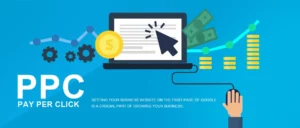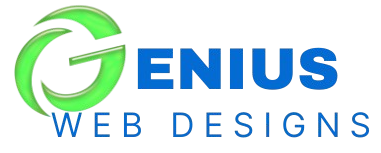
This article, “7 Powerful Strategies to Rank Higher & Get Found Online,” will guide you through the essential strategies to increase your online presence. We’ll explore:
- The power of Search Engine Optimization (SEO).
- The importance of Local SEO for businesses targeting specific regions.
- The immediate impact of Pay-Per-Click Advertising (PPC).
- The effectiveness of Retargeting Ads in re-engaging lost visitors.
- The specialized tactics of E-commerce Marketing to boost your online store’s performance.
By the end, you’ll have a clear roadmap to not only get found online but also drive more customers to your business. Let’s dive in!
Why Online Visibility is Critical in Today’s Digital World
In today’s digital-first world, having a strong online presence isn’t just an option—it’s a necessity. With millions of businesses competing for attention online, standing out and getting found by your target audience is more challenging than ever. Whether you’re a small local shop or a global e-commerce brand, your ability to attract customers hinges on one critical factor: visibility. If potential customers can’t find you online, they’re likely to turn to your competitors instead.
But how do you ensure your business gets noticed in the vast digital landscape? The answer lies in a combination of strategic efforts designed to drive traffic and boost your online visibility. From optimizing your website to rank higher on search engines to leveraging paid ads and retargeting campaigns, there are proven methods to help you connect with your audience and turn them into loyal customers.
1. The Importance of Traffic & Visibility
In the digital age, traffic and visibility are the lifeblood of any successful online business. Think of your website or online store as a physical shop: no matter how great your products or services are, if customers can’t find you, your business won’t thrive. Traffic—the number of visitors coming to your site—and visibility—how easily your business can be discovered online—are the foundational elements that determine your ability to attract, engage, and convert potential customers.
Why Traffic & Visibility Matter
- First Impressions Are Digital:
- Today, most customers discover businesses through online searches, social media, or digital ads. If your business isn’t visible where your audience is looking, you’re missing out on valuable opportunities.
- Studies show that 75% of users never scroll past the first page of search results, making it critical to rank high on search engines like Google.
- Increased Traffic Drives Growth:
- More traffic means more opportunities to convert visitors into customers. Whether you’re selling products, offering services, or building a brand, a steady stream of visitors is essential for sustained growth.
- For e-commerce businesses, higher traffic directly correlates with increased sales, while service-based businesses benefit from more leads and inquiries.
- Visibility Builds Trust and Credibility:
- When your business appears prominently in search results, on social media, or in local directories, it signals to customers that you’re a legitimate and trustworthy option.
- Positive reviews, consistent branding, and a strong online presence further enhance your reputation, making customers more likely to choose you over competitors.
- Competitive Advantage:
- In crowded markets, visibility sets you apart. If your competitors are dominating search results or social media feeds, you risk being overlooked. By investing in strategies like SEO, PPC, and local marketing, you can level the playing field—or even surpass your competition.
The Challenges of Standing Out Online
While the benefits of traffic and visibility are clear, achieving them isn’t always easy. The digital landscape is highly competitive, with businesses of all sizes vying for attention. Additionally, algorithms for search engines and social media platforms are constantly evolving, requiring businesses to stay agile and adapt their strategies.
- Competition: Millions of websites and online stores are competing for the same audience.
- Algorithm Changes: Updates to search engine algorithms can impact your rankings overnight.
- Consumer Behavior: Customers are becoming more selective, with shorter attention spans and higher expectations for personalized experiences.
The Bottom Line
Traffic and visibility are not just metrics to track—they’re essential components of your business’s success. Without them, even the best products or services can go unnoticed. By prioritizing strategies that increase your online presence, you can ensure that your business is found by the right people, at the right time, and in the right place. In the following sections, we’ll explore the key strategies to help you achieve this goal and drive more customers to your business.

2. Search Engine Optimization (SEO): The Foundation of Online Visibility
When it comes to getting found online, Search Engine Optimization (SEO) is the cornerstone of any successful digital strategy. SEO is the process of optimizing your website and its content to rank higher on search engine results pages (SERPs) for relevant keywords. Unlike paid advertising, which delivers immediate but temporary results, SEO focuses on building long-term organic visibility, making it one of the most cost-effective ways to drive consistent traffic to your site.
What is SEO?
SEO involves a combination of techniques designed to make your website more attractive to search engines like Google, Bing, and Yahoo. The goal is to improve your site’s ranking for specific search terms, ensuring that when potential customers search for products, services, or information related to your business, your website appears as one of the top results.
Why SEO Matters
- Organic Traffic is Sustainable:
- Unlike paid ads, which stop driving traffic the moment you stop paying, SEO builds a foundation for long-term, sustainable growth. High rankings can continue to bring in visitors for months or even years.
- Credibility and Trust:
- Websites that rank higher on search engines are often perceived as more trustworthy and authoritative by users. SEO helps establish your business as a credible source in your industry.
- Cost-Effective Marketing:
- While SEO requires an upfront investment of time and resources, it often delivers a higher return on investment (ROI) compared to paid advertising over time.
- Better User Experience:
- SEO isn’t just about pleasing search engines—it’s also about creating a better experience for your users. A well-optimized site is faster, easier to navigate, and more relevant to visitors’ needs.
Key Components of SEO
To achieve higher rankings, SEO focuses on three main areas: On-Page SEO, Off-Page SEO, and Technical SEO.
- On-Page SEO:
- This involves optimizing individual pages on your website to make them more search-engine friendly. Key elements include:
- Keyword Research: Identifying the terms your target audience is searching for and incorporating them naturally into your content.
- Content Quality: Creating valuable, informative, and engaging content that answers users’ questions and meets their needs.
- Meta Tags: Writing compelling title tags and meta descriptions to improve click-through rates.
- Headers and Structure: Using proper heading tags (H1, H2, H3) to organize content and make it easier for search engines to understand.
- Image Optimization: Using descriptive file names and alt text for images to improve accessibility and rankings.
- This involves optimizing individual pages on your website to make them more search-engine friendly. Key elements include:
- Off-Page SEO:
- This focuses on activities outside your website that impact your rankings, primarily through backlinks (links from other websites to yours). Key strategies include:
- Link Building: Earning high-quality backlinks from reputable websites in your industry.
- Social Signals: Promoting your content on social media to increase visibility and engagement.
- Online Reputation Management: Encouraging positive reviews and mentions of your brand across the web.
- This focuses on activities outside your website that impact your rankings, primarily through backlinks (links from other websites to yours). Key strategies include:
- Technical SEO:
- This ensures that your website is technically sound and easy for search engines to crawl and index. Key aspects include:
- Site Speed: Optimizing loading times to improve user experience and rankings.
- Mobile-Friendliness: Ensuring your site is responsive and works seamlessly on all devices.
- Secure Website: Using HTTPS to protect user data and boost trust.
- XML Sitemaps: Creating a sitemap to help search engines understand your site’s structure.
- Crawlability: Fixing broken links, optimizing robots.txt files, and ensuring proper indexing.
- This ensures that your website is technically sound and easy for search engines to crawl and index. Key aspects include:
The Benefits of SEO
- Higher Rankings: Improved visibility on search engines leads to more organic traffic.
- Targeted Audience: SEO helps you attract visitors who are actively searching for what you offer.
- Long-Term Results: Unlike paid ads, the effects of SEO compound over time, delivering lasting benefits.
- Competitive Edge: Outranking competitors in search results can significantly boost your market share.
Getting Started with SEO
- Conduct a Website Audit: Identify areas for improvement, such as slow loading times, broken links, or missing meta tags.
- Research Keywords: Use tools like Google Keyword Planner, SEMrush, or Ahrefs to find relevant keywords with high search volume and low competition.
- Create High-Quality Content: Focus on producing content that addresses your audience’s needs and incorporates your target keywords naturally.
- Build Backlinks: Reach out to industry blogs, collaborate with influencers, or create shareable content to earn quality backlinks.
- Monitor Performance: Use tools like Google Analytics and Google Search Console to track your rankings, traffic, and user behavior.
Conclusion
SEO is not a one-time task but an ongoing process that requires consistent effort and adaptation to changing algorithms and trends. By investing in SEO, you lay the groundwork for sustainable online visibility, ensuring that your business gets found by the right people at the right time. In the next section, we’ll explore how Local SEO can help you dominate your local market and attract customers in your area.

3. Local SEO: Dominate Your Local Market
For businesses that serve specific geographic areas whether it’s a neighborhood, city, or region Local SEO is a game-changer. Local SEO focuses on optimizing your online presence to attract more customers from local searches. With the rise of “near me” searches and the increasing use of mobile devices, local search optimization has become essential for businesses with physical locations or those targeting local audiences. By dominating your local market, you can ensure that your business stands out when potential customers are searching for products or services in your area.
What is Local SEO?
Local SEO is a subset of traditional SEO that focuses on improving your visibility in local search results. This includes appearing in the local pack (the map and business listings that show up at the top of search results) and ranking for location-specific keywords, such as “coffee shop near me” or “plumber in [City Name].” Local SEO also involves optimizing your presence on platforms like Google My Business (GMB), online directories, and review sites.
Why Local SEO Matters
- Reach Local Customers:
- According to Google, 46% of all searches have local intent, meaning people are looking for businesses or services in their area. Local SEO ensures your business appears in these searches.
- Mobile Searches Drive Local Traffic:
- With the majority of local searches happening on mobile devices, optimizing for local SEO helps you capture on-the-go customers who are ready to visit or contact your business.
- Build Trust with Local Audiences:
- Appearing in local search results and having positive reviews builds credibility and trust with potential customers in your community.
- Competitive Advantage:
- Many small businesses overlook Local SEO, giving you an opportunity to outrank competitors and dominate your local market.
Key Components of Local SEO
To succeed in Local SEO, you need to focus on several key strategies:
- Google My Business (GMB) Optimization:
- Claim and Verify Your Listing: Ensure your GMB profile is claimed, verified, and up-to-date with accurate information.
- Complete Your Profile: Fill out every section, including your business name, address, phone number (NAP), website, hours of operation, and categories.
- Add Photos and Videos: Showcase your business with high-quality images of your storefront, products, and team.
- Encourage Reviews: Positive reviews not only improve your rankings but also influence potential customers’ decisions.
- Post Updates: Use GMB posts to share promotions, events, and news to engage with local customers.
- Local Keywords:
- Incorporate location-specific keywords into your website content, meta tags, and headings. For example, instead of targeting “bakery,” target “bakery in [City Name]” or “best cupcakes in [Neighborhood].”
- Use tools like Google Keyword Planner or Ubersuggest to find relevant local keywords with high search volume.
- Local Citations and Directories:
- Ensure your business is listed consistently across online directories like Yelp, Yellow Pages, and industry-specific platforms. Consistent NAP (Name, Address, Phone Number) information is crucial for Local SEO.
- Focus on directories that are relevant to your industry and location.
- On-Page Local SEO:
- Create location-specific landing pages if you serve multiple areas. For example, a plumber could have separate pages for “Plumbing Services in [City 1]” and “Plumbing Services in [City 2].”
- Add your business address, phone number, and a map to your website’s contact page.
- Online Reviews:
- Encourage satisfied customers to leave reviews on Google, Yelp, and other platforms. Respond to reviews—both positive and negative—to show that you value customer feedback.
- High ratings and a large number of reviews can significantly boost your local rankings.
- Local Link Building:
- Build relationships with local bloggers, news outlets, and organizations to earn backlinks from local websites.
- Sponsor local events or participate in community activities to gain exposure and links.
Benefits of Local SEO
- Increased Foot Traffic: Appearing in local search results and Google Maps drives more customers to your physical location.
- Higher Conversion Rates: Local searches often have higher intent, meaning users are more likely to take action (e.g., visit, call, or purchase).
- Cost-Effective Marketing: Local SEO is often more affordable than traditional advertising and delivers a higher ROI for small businesses.
- Community Engagement: By focusing on local customers, you can build stronger relationships within your community and foster brand loyalty.
Getting Started with Local SEO
- Set Up or Optimize Your GMB Profile: Ensure your listing is complete, accurate, and engaging.
- Research Local Keywords: Identify the terms your local audience is searching for and incorporate them into your website and content.
- Build Local Citations: List your business on relevant directories and ensure consistency across all platforms.
- Encourage Reviews: Ask happy customers to leave reviews and respond to them promptly.
- Create Local Content: Write blog posts or create videos that highlight your involvement in the community or address local topics.
Conclusion
Local SEO is a powerful tool for businesses that rely on local customers. By optimizing your online presence for local searches, you can ensure that your business is visible to the people who matter most—those in your community. Whether you’re a restaurant, a retail store, or a service provider, Local SEO helps you dominate your local market and drive more customers through your doors. In the next section, we’ll explore how Pay-Per-Click Advertising (PPC) can complement your SEO efforts and deliver immediate results.

4. Pay-Per-Click Advertising (PPC): Fast-Track Your Visibility
While SEO is a powerful long-term strategy for driving organic traffic, Pay-Per-Click Advertising (PPC) offers a way to fast-track your visibility and get immediate results. PPC is a digital advertising model where you pay a fee each time someone clicks on your ad. It’s a highly effective way to reach your target audience quickly, especially when you’re looking to boost traffic, generate leads, or promote a new product or service.
What is PPC?
PPC is a form of online advertising that allows businesses to bid for ad placement in search engine results or on other digital platforms. The most common type of PPC is search engine advertising, where ads appear at the top of search engine results pages (SERPs) for specific keywords. Popular PPC platforms include Google Ads, Bing Ads, and social media advertising platforms like Facebook Ads, Instagram Ads, and LinkedIn Ads.
How PPC Works
- Keyword Bidding: Advertisers bid on keywords relevant to their target audience. When a user searches for those keywords, an auction determines which ads are displayed.
- Ad Placement: Winning ads appear at the top or bottom of search results or on relevant websites within the platform’s advertising network.
- Pay-Per-Click: Advertisers only pay when someone clicks on their ad, making it a cost-effective way to drive targeted traffic.
Why PPC Matters
- Immediate Results:
- Unlike SEO, which can take months to show results, PPC delivers instant visibility. Your ads can start driving traffic to your website as soon as your campaign goes live.
- Precise Targeting:
- PPC allows you to target specific demographics, locations, devices, and even times of day, ensuring your ads reach the right audience.
- Measurable ROI:
- With detailed analytics, you can track clicks, conversions, and return on investment (ROI) in real time, making it easy to adjust your strategy for better results.
- Flexibility and Control:
- You have full control over your budget, ad copy, and targeting options, allowing you to experiment and optimize your campaigns for maximum effectiveness.
Key Components of a Successful PPC Campaign
- Keyword Research:
- Identify high-intent keywords that your target audience is searching for. Use tools like Google Keyword Planner, SEMrush, or Ahrefs to find relevant keywords with a good balance of search volume and competition.
- Compelling Ad Copy:
- Write clear, engaging, and action-oriented ad copy that highlights your unique selling points (USPs) and encourages users to click.
- Include a strong call-to-action (CTA), such as “Shop Now,” “Get a Free Quote,” or “Learn More.”
- Landing Page Optimization:
- Ensure your landing page is relevant to the ad and provides a seamless user experience. The page should load quickly, be mobile-friendly, and have a clear CTA.
- Budget Management:
- Set a daily or monthly budget for your campaigns and monitor spending to ensure you’re getting the most out of your investment.
- A/B Testing:
- Test different ad variations (e.g., headlines, descriptions, CTAs) to see what resonates best with your audience and drives the most conversions.
Popular PPC Platforms
- Google Ads:
- The most widely used PPC platform, Google Ads allows you to display ads on Google’s search engine and its network of partner sites.
- Offers various ad formats, including search ads, display ads, shopping ads, and video ads.
- Bing Ads:
- Similar to Google Ads but for the Bing search engine. It’s a great option for reaching audiences who use Bing or Microsoft products.
- Social Media Ads:
- Platforms like Facebook, Instagram, LinkedIn, and Twitter offer PPC advertising options tailored to their user base.
- Ideal for businesses looking to target specific demographics, interests, or behaviors.
Benefits of PPC
- Fast Results: Get your ads in front of your target audience almost instantly.
- Highly Targeted: Reach specific audiences based on demographics, location, interests, and more.
- Scalable: Start small and scale your campaigns as you see results.
- Trackable: Measure performance in real time and make data-driven decisions.
Getting Started with PPC
- Define Your Goals:
- Determine what you want to achieve with your PPC campaign (e.g., increase website traffic, generate leads, boost sales).
- Choose the Right Platform:
- Select the platform that aligns with your target audience and goals.
- Set a Budget:
- Decide how much you’re willing to spend and allocate your budget across campaigns.
- Create and Launch Your Ads:
- Develop compelling ad copy and visuals, and launch your campaign.
- Monitor and Optimize:
- Track performance metrics like click-through rate (CTR), conversion rate, and cost-per-click (CPC). Adjust your strategy based on the data.
Conclusion
PPC is a powerful tool for businesses looking to fast-track their online visibility and drive immediate results. Whether you’re launching a new product, promoting a special offer, or simply looking to boost traffic, PPC offers a flexible and measurable way to reach your target audience. By combining PPC with other strategies like SEO and Local SEO, you can create a comprehensive digital marketing plan that maximizes your online presence and drives more customers to your business. In the next section, we’ll explore how Retargeting Ads can help you re-engage lost visitors and turn them into loyal customers.

5. Retargeting & Remarketing Ads: Re-Engage Lost Visitors
Imagine this: a potential customer visits your website, browses your products or services, and then leaves without making a purchase. Sound familiar? It happens to every business. But what if you could bring those lost visitors back and turn them into customers? That’s where Retargeting and Remarketing Ads come in. These powerful advertising strategies allow you to re-engage users who have already interacted with your brand, increasing the chances of converting them into paying customers.
What Are Retargeting and Remarketing Ads?
Retargeting and remarketing are often used interchangeably, but they refer to slightly different approaches:
- Retargeting: Typically involves using cookies or pixels to track users who visit your website and then showing them targeted ads as they browse other sites or social media platforms.
- Remarketing: Often refers to re-engaging users through email campaigns, such as sending follow-up emails to customers who abandoned their shopping carts.
Both strategies aim to reconnect with users who have already shown interest in your brand, products, or services.
How Retargeting Works
- Tracking: A small piece of code (pixel) is placed on your website. When a user visits your site, the pixel drops a cookie on their browser, allowing you to track their activity.
- Ad Display: As the user browses other websites or social media platforms, the cookie triggers your retargeting ads to appear.
- Re-Engagement: The ads remind users of the products or services they viewed, encouraging them to return and complete their purchase.
Why Retargeting and Remarketing Matter
- Higher Conversion Rates:
- Users who are retargeted are 70% more likely to convert than new visitors. This is because they’ve already shown interest in your brand.
- Cost-Effective:
- Retargeting is often more affordable than acquiring new customers, as you’re targeting a warm audience that’s already familiar with your business.
- Builds Brand Awareness:
- Even if users don’t convert immediately, retargeting keeps your brand top-of-mind, increasing the likelihood of future engagement.
- Reduces Cart Abandonment:
- Remarketing emails can recover lost sales by reminding users of the items they left in their cart and offering incentives like discounts or free shipping.
Key Components of a Successful Retargeting Campaign
- Segment Your Audience:
- Not all website visitors are the same. Segment your audience based on their behavior, such as:
- Users who viewed specific products or services.
- Users who added items to their cart but didn’t check out.
- Users who visited your pricing page but didn’t convert.
- Tailor your ads to each segment for maximum relevance.
- Not all website visitors are the same. Segment your audience based on their behavior, such as:
- Create Compelling Ad Creatives:
- Use eye-catching visuals and persuasive copy that remind users of what they viewed or left behind.
- Highlight unique selling points (USPs), such as free shipping, limited-time offers, or customer reviews.
- Set Frequency Caps:
- Avoid overwhelming users with too many ads. Set limits on how often your ads are shown to prevent ad fatigue.
- Use Dynamic Retargeting:
- Dynamic ads automatically show users the exact products or services they viewed, making the ads highly personalized and effective.
- Offer Incentives:
- Encourage users to return by offering discounts, free trials, or exclusive deals.
Popular Retargeting Platforms
- Google Display Network:
- Allows you to show retargeting ads on millions of websites and apps within Google’s network.
- Facebook and Instagram Ads:
- Ideal for retargeting users who interacted with your brand on social media or visited your website.
- LinkedIn Ads:
- Great for B2B businesses looking to retarget professionals who visited their website or engaged with their content.
- Email Remarketing:
- Send personalized emails to users who abandoned their carts or didn’t complete a purchase.
Benefits of Retargeting and Remarketing
- Increased Conversions: Re-engage users who are already interested in your products or services.
- Improved ROI: Retargeting campaigns often deliver a higher return on investment compared to other advertising methods.
- Enhanced Personalization: Deliver tailored ads that resonate with users based on their previous interactions.
- Stronger Brand Recall: Keep your brand visible to potential customers, even after they leave your site.
Getting Started with Retargeting
- Install a Tracking Pixel:
- Add a retargeting pixel from your chosen platform (e.g., Google Ads, Facebook) to your website.
- Define Your Audience:
- Create audience segments based on user behavior, such as page views, cart abandonment, or time spent on site.
- Design Your Ads:
- Create visually appealing and relevant ads that speak directly to each audience segment.
- Set Your Budget:
- Determine how much you’re willing to spend and allocate your budget across campaigns.
- Monitor and Optimize:
- Track key metrics like click-through rate (CTR), conversion rate, and cost-per-conversion. Adjust your strategy based on performance data.
Conclusion
Retargeting and remarketing ads are powerful tools for re-engaging lost visitors and turning them into loyal customers. By staying in front of users who have already shown interest in your brand, you can significantly increase your chances of conversion and drive more revenue for your business. When combined with other strategies like SEO, Local SEO, and PPC, retargeting creates a comprehensive digital marketing approach that maximizes your online visibility and customer acquisition efforts. In the next section, we’ll explore how E-commerce Marketing can help you boost your online store’s performance and drive more sales.

6. E-commerce Marketing: Boost Your Online Store’s Performance
In the fast-paced world of online shopping, simply having an e-commerce store isn’t enough. To stand out in a crowded marketplace and drive consistent sales, you need a robust E-commerce Marketing strategy. E-commerce marketing encompasses a range of tactics designed to attract visitors to your online store, convert them into customers, and keep them coming back for more. Whether you’re a small boutique or a large online retailer, these strategies can help you boost your store’s visibility, engagement, and revenue.
What is E-commerce Marketing?
E-commerce marketing refers to the strategies and techniques used to promote an online store and its products. It involves driving traffic to your website, optimizing the shopping experience, and encouraging repeat purchases. The goal is to create a seamless journey for your customers—from discovering your brand to making a purchase and beyond.
Why E-commerce Marketing Matters
- Increased Visibility:
- With millions of e-commerce stores competing for attention, effective marketing ensures your store gets noticed by your target audience.
- Higher Conversion Rates:
- A well-executed marketing strategy not only drives traffic but also converts visitors into paying customers.
- Customer Retention:
- Marketing isn’t just about acquiring new customers—it’s also about keeping them engaged and encouraging repeat purchases.
- Competitive Edge:
- In a saturated market, a strong marketing strategy helps you stand out from competitors and build a loyal customer base.
Key Components of E-commerce Marketing
To maximize your online store’s performance, focus on these essential strategies:
- Search Engine Optimization (SEO):
- Optimize your product pages, category pages, and blog content for relevant keywords to rank higher in search engine results.
- Use descriptive product titles, meta descriptions, and alt text for images to improve visibility.
- Create high-quality, engaging content that answers your customers’ questions and drives organic traffic.
- Pay-Per-Click Advertising (PPC):
- Run targeted ads on platforms like Google Ads and Bing Ads to drive immediate traffic to your store.
- Use Google Shopping Ads to showcase your products directly in search results.
- Leverage social media PPC campaigns on platforms like Facebook, Instagram, and Pinterest to reach your ideal audience.
- Social Media Marketing:
- Promote your products on platforms like Instagram, Facebook, TikTok, and Pinterest, where visual content drives engagement.
- Use influencer marketing to collaborate with influencers who can showcase your products to their followers.
- Run contests, giveaways, and user-generated content campaigns to increase brand awareness and engagement.
- Email Marketing:
- Build an email list and send personalized campaigns to nurture leads and drive sales.
- Use abandoned cart emails to recover lost sales by reminding customers of the items they left behind.
- Send promotional emails, product recommendations, and exclusive offers to keep customers engaged.
- Content Marketing:
- Create valuable content like blog posts, videos, and guides that address your customers’ needs and interests.
- Use content to showcase your expertise, build trust, and drive organic traffic to your store.
- Incorporate storytelling to connect with your audience on an emotional level and highlight your brand’s unique value.
- Retargeting and Remarketing:
- Use retargeting ads to re-engage visitors who didn’t make a purchase.
- Send remarketing emails to customers who abandoned their carts or browsed specific products.
- User Experience (UX) Optimization:
- Ensure your website is easy to navigate, mobile-friendly, and fast-loading.
- Simplify the checkout process to reduce cart abandonment rates.
- Use high-quality images, detailed product descriptions, and customer reviews to build trust and encourage purchases.
- Loyalty Programs and Discounts:
- Offer rewards programs, discounts, or free shipping to incentivize repeat purchases.
- Create exclusive offers for loyal customers to foster long-term relationships.
Benefits of E-commerce Marketing
- Increased Traffic: Drive more visitors to your online store through SEO, PPC, and social media.
- Higher Conversions: Optimize your store’s design and marketing campaigns to turn visitors into customers.
- Customer Retention: Build lasting relationships with your customers through email marketing and loyalty programs.
- Brand Awareness: Establish your brand as a trusted authority in your niche through content and social media marketing.
Getting Started with E-commerce Marketing
- Define Your Goals:
- Determine what you want to achieve, whether it’s increasing sales, improving customer retention, or boosting brand awareness.
- Know Your Audience:
- Understand your target customers’ preferences, behaviors, and pain points to tailor your marketing efforts.
- Choose the Right Platforms:
- Focus on the platforms where your audience spends the most time, such as Instagram for visual products or LinkedIn for B2B services.
- Create a Content Calendar:
- Plan and schedule your content, ads, and email campaigns to stay consistent and organized.
- Track and Analyze Performance:
- Use tools like Google Analytics, Facebook Insights, and email marketing software to measure the success of your campaigns and make data-driven adjustments.
Conclusion
E-commerce marketing is the key to unlocking your online store’s full potential. By combining strategies like SEO, PPC, social media marketing, and email campaigns, you can attract more visitors, convert them into customers, and build a loyal community around your brand. In today’s competitive e-commerce landscape, a well-rounded marketing strategy isn’t just an option—it’s a necessity. Start implementing these tactics today to boost your store’s performance and drive sustainable growth. In the final section, we’ll explore how to integrate all these strategies into a cohesive plan for maximum impact.

7. Integrating Strategies for Maximum Impact
While each digital marketing strategy, SEO, Local SEO, PPC, Retargeting, and E-commerce Marketing can deliver results on its own, the real power lies in combining them into a cohesive, integrated plan. By aligning these strategies, you can create a seamless customer journey that maximizes your online visibility, drives more traffic, and converts visitors into loyal customers. Here’s how to integrate these tactics for maximum impact.
Why Integration Matters
- Holistic Approach:
- A single strategy might address one aspect of your marketing, but an integrated approach ensures you’re covering all bases—visibility, engagement, and conversion.
- Consistent Messaging:
- Integrating your strategies ensures that your brand message is consistent across all channels, reinforcing trust and recognition.
- Efficient Use of Resources:
- By aligning your efforts, you can avoid duplication, streamline your campaigns, and get more value from your budget.
- Enhanced Customer Experience:
- A unified strategy creates a smoother, more personalized experience for your customers, from discovery to purchase and beyond.
How to Integrate Your Strategies
- Start with SEO as the Foundation:
- Use SEO to build long-term organic visibility and drive sustainable traffic to your website.
- Optimize your site for both traditional and local SEO to capture a wider audience.
- Create high-quality content that supports your SEO efforts and provides value to your customers.
- Amplify Visibility with PPC:
- Use PPC campaigns to complement your SEO efforts by targeting high-intent keywords and driving immediate traffic.
- Run Google Shopping Ads to showcase your products directly in search results.
- Leverage social media PPC to reach your audience on platforms like Facebook, Instagram, and LinkedIn.
- Re-Engage with Retargeting:
- Use retargeting ads to bring back visitors who didn’t convert on their first visit.
- Segment your audience based on their behavior (e.g., cart abandoners, product viewers) and tailor your retargeting ads accordingly.
- Combine retargeting with email remarketing to create multiple touchpoints for re-engagement.
- Leverage E-commerce Marketing for Conversions:
- Optimize your online store for a seamless user experience, from product discovery to checkout.
- Use email marketing to nurture leads, recover abandoned carts, and encourage repeat purchases.
- Implement loyalty programs and exclusive offers to build long-term customer relationships.
- Sync Your Messaging Across Channels:
- Ensure your brand voice, visuals, and messaging are consistent across SEO, PPC, social media, and email campaigns.
- Use the same keywords, CTAs, and value propositions to create a cohesive experience for your audience.
- Use Data to Drive Decisions:
- Track performance metrics across all channels using tools like Google Analytics, Google Search Console, and social media insights.
- Identify which strategies are driving the most traffic, conversions, and ROI, and allocate your resources accordingly.
- Continuously test and optimize your campaigns based on data-driven insights.
Example of an Integrated Campaign
Let’s say you’re launching a new product. Here’s how you could integrate your strategies:
- SEO: Optimize your product page and blog content for relevant keywords to rank in organic search results.
- Local SEO: If you have a physical store, optimize your Google My Business profile and target local keywords to attract nearby customers.
- PPC: Run Google Ads and social media ads to promote the product and drive immediate traffic.
- Retargeting: Use retargeting ads to re-engage visitors who viewed the product but didn’t purchase.
- Email Marketing: Send a series of emails to your subscribers, highlighting the product’s benefits and offering exclusive discounts.
- Social Media: Share engaging content about the product on Instagram, Facebook, and TikTok, and collaborate with influencers to amplify reach.
Benefits of an Integrated Approach
- Increased Reach: Combining multiple strategies ensures you’re reaching your audience at every stage of their journey.
- Higher Conversions: A seamless, multi-channel experience makes it easier for customers to take action.
- Stronger Brand Presence: Consistent messaging across channels builds trust and recognition.
- Better ROI: By aligning your efforts, you can maximize the impact of your marketing budget.
Getting Started with Integration
- Audit Your Current Strategies:
- Evaluate your existing campaigns to identify gaps and opportunities for integration.
- Set Clear Goals:
- Define what you want to achieve with your integrated strategy, such as increasing sales, improving customer retention, or boosting brand awareness.
- Create a Unified Plan:
- Develop a comprehensive marketing plan that outlines how each strategy will work together to achieve your goals.
- Use the Right Tools:
- Invest in tools like CRM software, marketing automation platforms, and analytics tools to streamline your efforts and track performance.
- Monitor and Adjust:
- Regularly review your campaigns and make data-driven adjustments to optimize performance.
Conclusion
Integrating your digital marketing strategies is the key to unlocking maximum impact and achieving sustainable growth. By combining SEO, PPC, retargeting, e-commerce marketing, and more, you can create a powerful, cohesive plan that drives traffic, boosts conversions, and builds lasting customer relationships. In today’s competitive digital landscape, an integrated approach isn’t just a best practice—it’s a necessity. Start aligning your strategies today to take your online presence to the next level.

Tools & Resources to Get Started
To successfully implement the strategies discussed in this article SEO, Local SEO, PPC, Retargeting, and E-commerce Marketing, you’ll need the right tools and resources. These tools can help you streamline your efforts, track performance, and optimize your campaigns for better results. Here’s a curated list of essential tools and resources to get you started:
1. SEO Tools
- Google Analytics:
- Track website traffic, user behavior, and conversion metrics.
- Free and essential for understanding your audience and measuring SEO performance.
- Google Search Console:
- Monitor your site’s search performance, fix indexing issues, and identify keyword opportunities.
- SEMrush:
- A comprehensive SEO tool for keyword research, competitor analysis, backlink tracking, and site audits.
- Ahrefs:
- Known for its backlink analysis and keyword research capabilities, Ahrefs is a powerful tool for SEO professionals.
- Moz Pro:
- Offers tools for keyword research, site audits, and rank tracking, along with helpful SEO insights.
- Yoast SEO (for WordPress):
- A plugin that helps optimize your website’s on-page SEO, including meta tags, readability, and XML sitemaps.
2. Local SEO Tools
- Google My Business (GMB):
- Claim and optimize your GMB profile to improve local search visibility.
- BrightLocal:
- A tool for managing local SEO, including citation building, review monitoring, and local rank tracking.
- Yext:
- Helps businesses manage their online listings and ensure consistent NAP (Name, Address, Phone) information across directories.
- ReviewTrackers:
- Monitor and respond to customer reviews across multiple platforms to improve your local reputation.
3. PPC Tools
- Google Ads:
- The most popular platform for running search, display, and shopping ads.
- Microsoft Advertising (Bing Ads):
- A great alternative to Google Ads for reaching audiences on Bing and Microsoft’s network.
- Facebook Ads Manager:
- Create and manage PPC campaigns on Facebook and Instagram.
- AdEspresso:
- A tool for managing and optimizing Facebook, Instagram, and Google Ads campaigns.
- WordStream:
- Provides tools and resources to help you manage and optimize your PPC campaigns.
4. Retargeting Tools
- Google Display Network:
- Run retargeting ads across millions of websites and apps.
- Facebook Pixel:
- Track user behavior on your website and create custom audiences for retargeting ads.
- AdRoll:
- A retargeting platform that works across multiple channels, including social media and email.
- Perfect Audience:
- Specializes in retargeting ads for e-commerce businesses.
5. E-commerce Marketing Tools
- Shopify:
- A popular e-commerce platform with built-in marketing tools for SEO, email, and social media.
- WooCommerce (for WordPress):
- A flexible e-commerce plugin that integrates with WordPress.
- Klaviyo:
- An email marketing platform designed for e-commerce businesses, with features for abandoned cart emails and personalized campaigns.
- Privy:
- A tool for creating pop-ups, banners, and email campaigns to capture leads and recover abandoned carts.
- Google Shopping:
- Showcase your products directly in Google search results with Shopping Ads.
6. Content Marketing Tools
- Canva:
- A user-friendly design tool for creating visuals for social media, blogs, and ads.
- Grammarly:
- Ensures your content is error-free and easy to read.
- BuzzSumo:
- Helps you discover trending content and analyze what’s working for your competitors.
- CoSchedule Headline Analyzer:
- A tool for crafting compelling headlines that drive clicks and engagement.
7. Analytics and Reporting Tools
- Google Data Studio:
- Create custom dashboards and reports to visualize your marketing performance.
- Hotjar:
- Analyze user behavior on your website with heatmaps, session recordings, and surveys.
- Tableau:
- A powerful data visualization tool for advanced analytics and reporting.
8. Learning Resources
- Google Skillshop:
- Free courses on Google Ads, Google Analytics, and other Google tools.
- HubSpot Academy:
- Offers free courses on SEO, content marketing, email marketing, and more.
- Moz Beginner’s Guide to SEO:
- A comprehensive resource for learning the basics of SEO.
- Facebook Blueprint:
- Free courses on Facebook and Instagram advertising.
- YouTube Tutorials:
- Channels like Neil Patel, Ahrefs, and Surfside PPC offer free, high-quality tutorials on digital marketing.
9. Project Management and Collaboration Tools
- Trello:
- A visual project management tool for organizing tasks and campaigns.
- Asana:
- A platform for team collaboration and project tracking.
- Slack:
- A communication tool for teams to collaborate in real time.
10. Budget-Friendly Options
- If you’re just starting out or have a limited budget, consider free or low-cost alternatives:
- Google Keyword Planner (free) for keyword research.
- Mailchimp (free tier) for email marketing.
- Canva (free version) for graphic design.
- Google Analytics and Google Search Console (free) for tracking performance.
Having the right tools and resources is essential for executing your digital marketing strategies effectively. Whether you’re optimizing your website for SEO, running PPC campaigns, or re-engaging lost visitors with retargeting ads, these tools can help you save time, improve accuracy, and achieve better results. Start by identifying the tools that align with your goals and budget, and gradually build your toolkit as your business grows. With the right resources in hand, you’ll be well-equipped to drive traffic, boost visibility, and grow your online presence.

Conclusion
In today’s digital-first world, traffic and visibility are the cornerstones of any successful online business. Whether you’re a small local shop, an e-commerce store, or a global brand, your ability to attract and retain customers depends on how well you can get found online. From optimizing your website for search engines to running targeted ads and re-engaging lost visitors, the strategies outlined in this article—SEO, Local SEO, PPC, Retargeting, and E-commerce Marketing—provide a comprehensive roadmap to boost your online presence and drive more customers to your business.
Key Takeaways
- SEO is the Foundation:
- Investing in SEO ensures long-term organic growth and sustainable traffic. By optimizing your website and creating valuable content, you can rank higher on search engines and attract the right audience.
- Local SEO Connects You to Your Community:
- For businesses serving specific geographic areas, Local SEO is essential. Optimizing your Google My Business profile, building local citations, and encouraging reviews can help you dominate your local market.
- PPC Delivers Immediate Results:
- Pay-Per-Click Advertising is a powerful way to fast-track your visibility and drive targeted traffic. With precise targeting and measurable ROI, PPC complements your organic efforts.
- Retargeting Brings Back Lost Visitors:
- Retargeting and remarketing ads allow you to re-engage users who didn’t convert on their first visit. By staying top-of-mind, you can turn lost opportunities into loyal customers.
- E-commerce Marketing Drives Sales:
- For online stores, a strong e-commerce marketing strategy is crucial. From optimizing product pages to running email campaigns, these tactics help you increase visibility, conversions, and customer retention.
- Integration Maximizes Impact:
- Combining these strategies into a cohesive plan ensures a seamless customer journey and maximizes your marketing efforts. Consistent messaging and data-driven optimization are key to success.
The Path Forward
The digital landscape is constantly evolving, and staying ahead requires adaptability, creativity, and a willingness to experiment. Start by evaluating your current strategies and identifying areas for improvement. Use the tools and resources mentioned in this article to streamline your efforts and track your progress. Remember, digital marketing is not a one-time effort—it’s an ongoing process that requires continuous learning and optimization.
Final Thought
By focusing on traffic and visibility, you’re not just building a website or running ads—you’re creating opportunities to connect with your audience, solve their problems, and grow your business. Whether you’re just starting out or looking to take your online presence to the next level, the strategies and tools discussed here can help you achieve your goals. So, take the first step today, and watch your business thrive in the digital world.
Your customers are out there searching, make sure they find you.



